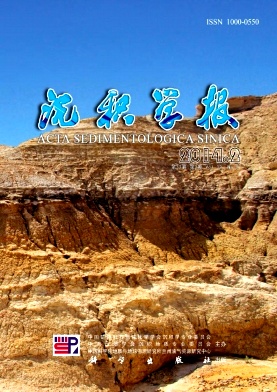Geological Significance of Magmatic Gravel Roundness
- Publish Date: 2014-04-10
-
Key words:
- roundness /
- transport distance /
- quantitative relation /
- gravel /
- influencing factors
Abstract: The rise of quantitative geology promotes the rapid development of earth science, while the study on the quantitative relation between gravel roundness and transport distance has not made obvious progress at home and abroad for a long time. The study on rounding laws and influencing factors of gravels has very important significance to the research of sedimentary environment, provenance analysis and paleogeography recovery in geological history. Four rivers were investigated in this study including Yongding River, Duijiuyu River, Luanhe River and Dashi River. Luanhe River and Dashi River are in Hebei province. Yongding River and Duijiuyu River that are in Beijing are studied in detail. The four rivers all lie on the east of North China platform around the Bohai bay. They have the similar geological backgrounds, climate conditions, and flood seasons. And their parent rocks are all magmatic rocks. All those factors cause the similar change law of roundness. Field investigation is the base of this study. Field investigation starts from the mountain-pass of each river where river flows out of the mountain. Investigation points were set from the mountain-pass to the downstream in each river. And 100 samples were taken at each point, described and statistically analyzed in detail. Based on the above study, the relation between roundness and transport distance is established, and influencing factors of gravel roundness are defined. Roundness class is defined by visual observation, according to the roundness classification standard and the figure of roundness shapes and classes from Powers. The roundness of gravel is divided into sharply angular, angular, subangular, subrounded, rounded, and well rounded. To minish the subjective errors from person, five people are needed to classify the roundness of every sample. When four or five people have the same result, then the result is eligible. This method can avoid the subjective errors, and make the results authentic and credible. Roundness of magmatic gravel becomes better with the increase of transport distance. It varies fast at the early stage of transport, then slower, and stable at the final. The particle size decreases gradually with the increase of the transport distance. In the upstream the flow is of high capability of transportation and can carry coarse grain because of the high flow velocity. To the downstream the flow is of low capability of transportation and can only carry fine grain because of the low flow velocity. Roundness mode is the highest proportion roundness class in each investigation point. It is a very useful parameter in the study of mixed accumulated gravels that are of different roundnesses. In this study the quantitative relation of roundness and transport distance is established based on the study of Yongding River, Duijiuyu River, Luanhe River and Dashi River. Magmatic gravels usually need to be carried 3~6 km from angular to subangular. They need to be carried 12~21 km from subangular to subrounded, and most of rounded gravels need to be carried at least 22~31 km. The roundness of gravel has a quantitative relation with the transport distance, which is universally applicable in the same geological background. The rounding law and the quantitative relation are significant in the source direction analysis and transport distance prediction. The change law of gravel roundness in the vertical profile can be used to analyze the evolution history of river and the size of basin. Gravel roundness is affected by transport distance, original composition, particle size and breaking. Magmatic gravels come from the mechanical disruption of source rock. The gravels are mainly sharply angular or angular without being rounded when they first form. They are subject to abrasion in the whole process of transport. Angular and subangular gravels are fast rounded to subrounded or rounded in the early stage of transport because of poor abrasion resistance, while it is very difficult from rounded to well rounded. The component of source rock affects the hardness and the abrasive resistance of gravel. The rounding rate of gravel with different original component is greatly different. The abrasion resistance of magmatic rocks is much higher than limestone, and is much lower than quartz. Based on the study of the four rivers, we find that the magmatic gravels are fast rounded within 30 km in the early stage of transport. The slope of the middle roundness curve is medium. The rounding of quartzose gravel is very slow. It has no great change after being carried for 250 km in Colorado River. The rounding of limestone gravel is the fastest. They are fast rounded after being carried 10 km in South Dakota. And the slop of the middle roundness curve of limestone gravel is the highest. So the rounding speed of magmatic gravel is faster than quartz and is slower than limestone. When the gravels have the same original composition and transport distance, coarse gravel is rounded faster than fine-grained gravel. The breaking lower roundness, and makes the roundness of a few gravels inconsistent with the distance of transport. Gravels are subject to mechanical breaking in the process of transport. The collision between the gravels is the main reason causing the breaking. And the gravels which are of high brittleness or have dissolved fractures are easy to break in the process of transport.
| Citation: | Geological Significance of Magmatic Gravel Roundness[J]. Acta Sedimentologica Sinica, 2014, 32(2): 189-197. |






 DownLoad:
DownLoad: